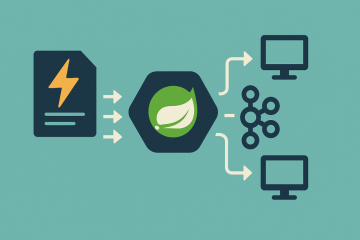Managing memory effectively is at the core of writing performant and scalable Java applications. Whether you’re tuning JVM settings, debugging OutOfMemoryErrors, or simply trying to understand how Java handles objects behind the scenes, having a solid grasp on memory management is vital
Managing memory effectively is at the core of writing performant and scalable Java applications. Whether you’re tuning JVM settings, debugging OutOfMemoryErrors, or simply trying to understand how Java handles objects behind the scenes, having a solid grasp on memory management is vital
In this post, we’ll walk through Java memory architecture, explore heap structure, examine garbage collection (GC) mechanisms, and highlight best practices to write efficient, memory-safe code
Java Memory Architecture at a Glance
Java memory is broadly divided into the following areas:
- Heap: Used for dynamic memory allocation of class instances and arrays.
- Stack: Stores method call frames, local variables, and reference pointers.
- Method Area (MetaSpace in Java 8+): Stores class metadata.
- Program Counter Register: Tracks execution of Java instructions.
- Native Method Stack: Used by native methods invoked via JNI.
Inside the Heap: Young, Old, and Permanent Generations
The heap is where most memory management drama unfolds. It is split into:
1. Young Generation
- Divided into Eden and two Survivor Spaces (S0 and S1).
- New objects are allocated in Eden.
- Minor GCs happen frequently here, as short-lived objects are collected quickly.
2. Old (Tenured) Generation
- Holds long-lived objects.
- Objects that survive multiple minor GCs are promoted here.
- Major GC (more expensive) occurs less frequently but impacts performance.
3. MetaSpace (Java 8+)
- Stores class metadata.
- Grows dynamically, unlike the old Permanent Generation which was space-limited.
Java Garbage Collection: Mechanisms & Algorithms
Java GC automates memory deallocation, but knowing how it works helps avoid performance pitfalls.
Common Garbage Collectors:
- Serial GC: Single-threaded, best for small applications.
- Parallel GC: Multi-threaded, throughput-oriented.
- CMS (Concurrent Mark-Sweep): Low pause time, now deprecated.
- G1 GC: Balances latency and throughput, default from Java 9 onwards.
- ZGC / Shenandoah (Java 11+): Ultra-low latency, scalable collectors for modern hardware.
GC Phases (Simplified):
- Mark: Identifies live objects.
- Sweep / Compact: Removes garbage and optionally compacts memory.
- Promotion: Surviving objects are moved to older generation.
Common Memory Issues
- OutOfMemoryError: When heap, metaspace, or native memory is exhausted.
- Memory Leaks: Caused by unreferenced objects that are still reachable.
- High GC Overhead: Frequent GC without enough object clearance.
Best Practices for Efficient Memory Management
1. Use Appropriate Object Scopes
Limit object lifetime. Avoid unnecessary object references (e.g., clearing unused collections).
2. Avoid Memory Leaks
Be cautious with:
- Static fields
- Long-living collections
- Listeners not deregistered
- Inner classes holding outer class references
3. Tune JVM Parameters
Tune heap sizes based on app usage:
diffCopyEdit-Xms512m -Xmx1024m -XX:NewRatio=2
Use GC-specific flags:
rubyCopyEdit-XX:+UseG1GC -XX:MaxGCPauseMillis=200
4. Leverage Profiling Tools
- VisualVM
- Eclipse MAT
- jstat, jmap, jconsole
They help diagnose memory leaks, heap dumps, and GC activity.
5. Use Weak References Where Needed
Use WeakReference for caches to avoid memory retention.
Real-World Scenario
In a microservice-based e-commerce application, a team noticed sluggish performance during high traffic. Profiling revealed excessive GC activity due to caching large product lists using strong references. Switching to a WeakHashMap and tuning the heap size and GC strategy reduced latency by 40%.
JVM Memory Monitoring Cheatsheet
| Tool | Use Case |
|---|---|
jconsole | Live monitoring of memory |
jmap | Heap dump capture |
jstat | GC statistics |
VisualVM | Visual profiling + heap analysis |
Eclipse MAT | Deep leak analysis from dumps |
Summary
Memory management in Java may be automated, but smart developers know how to tune and guide it. By understanding how heap, GC, and JVM internals work together, you gain the ability to write applications that scale without crashing, leaking, or lagging under pressure.



0 Comments